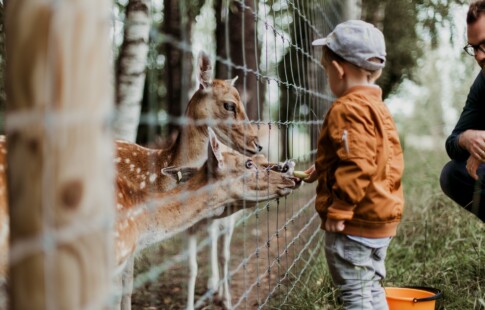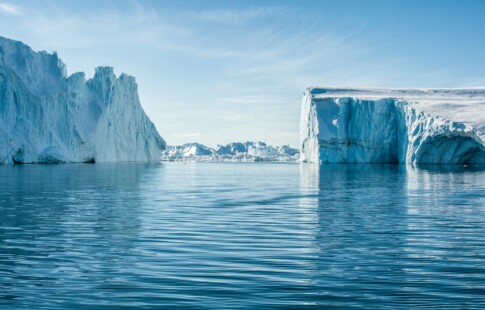
How Does Global Warming Affect Plants?
We are reader-supported. When you buy through links on our site, we may earn affiliate commission.
Extravagant gardens may elevate the appearance of a home or business. We utilize plants for their aesthetic appeal, gifting flowers to loved ones on special days. But the importance of plants extends beyond perennial gardens and Valentine’s Day roses, and with rising global temperatures, to preserve our plants we must consider how does global warming affect plants?
Plants support the global ecosystem by filtering carbon dioxide and providing vital oxygen to life on Earth. They also provide a habitat for species big and small, and food for mammals like us humans. Without our little green friends, life on Earth would cease to exist.
Plants also help our planet recover from natural disasters, which has become even more important with the growing frequency and severity of natural disasters, by protecting from soil erosion and releasing nutrients into the soil.
Unfortunately, a rise in the global temperature is jeopardizing the wellbeing of all plants. To understand how vegetation is suffering, we must first explore global warming as an independent concept.
Global Warming
When we talk about global warming concerning plants, there are two notable sectors – increased atmospheric greenhouse gases and climate change. The cause of global warming is an increase in air pollutants emitted into the environment. As these gases reach the atmosphere, they conduct the greenhouse effect.
Human contributed pollutants absorb the sun’s energy, transforming it into heat. Unlike naturally occurring atmospheric gases, they trap heat in the atmosphere for extended periods. This entrapment causes the global temperature to increase slightly over time.
To keep the environment from warming, plants absorb some gases on Earth’s surface to filter them before they reach the atmosphere. The immense increase in human-induced pollutants places plants in overdrive. Changing weather patterns also affect the stability and function of vegetation.
Climate change is a consequence of the rising global temperature, which alters consistent weather patterns. Increased precipitation, drought periods, and natural disasters affect the development of vegetation. The growth patterns, pests, flowering, periods, and water use of plants are affected by changes in their environment.
Growth Patterns
As summers become hotter, vegetation must adapt its growth patterns for survival. Because plants cannot migrate like some species, they grow taller to cool themselves off. As they grow upward, their stalks become longer, their leaves shrink, and they grow farther away from other plants.
The rise in plant height, and the increased distance between them, leaves plants unsupported and unstable. Without other stalks to lean on, the plants are more likely to bend and break. The increase in carbon dioxide also affects the growth of plants.
Vegetation utilizes carbon dioxide to promote growth. As the amount of these human-induced air pollutants rises, the growth of vegetation increases. Air composition alterations may stimulate the development of allergens and poisonous plant species.
Poison ivy grows at high rates in warmer, carbon dioxide-rich environments. Around 80% of civilians are allergic to this plant, so overgrowth may negatively affect human health. Other allergens will continue to invade Earth’s surface as the temperature and greenhouse gases increase, further impacting humans’ wellbeing.
Pests
As temperatures increase, plant affecting pests migrate to outrun environmental destruction. Insects and rodents will become concentrated in the North as they escape the heat of the South. Ecologists predict that pests-related vegetation loss will increase by 46% in wheat, 19% in rice, and 31% in maize. These statistics reflect a significant risk to humanity’s access to food.
The rising global temperature may also affect the vitality of all plants due to physical pest responses. Insects are ectotherms, meaning that as their body temperature rises, so does their metabolism. To meet physical needs, they must consume a higher amount of food. So, as the environment warms, pests will eat through more vegetation.
Rising temperatures also mean more pests surviving through the winter, reproduce more, and grow in population. Ultimately, this means more damage to native plants and trees, especially if invasive species’ populations increase.
Flowering Periods
Climate change causes warmer summer temperatures and inconsistent precipitation patterns. These environmental alterations affect the flowering periods of plants globally.
As the global temperature increases, plants will flower earlier in the season. Earlier bloom times reduce the plant’s ability to withstand the entire season. As precipitation decreases, flowers may bloom later in the season. This affects the species which rely on this bloom for food, shade, and more.
Water Use
As the planet warms, growing seasons become more prolonged, and precipitation may increase. Vegetation will have more time to consume water to continue its growth, drying out the soil. When plants deplete soil nutrients, soil becomes uninhabitable for plant, animal, and insect species.
Sea level rising also means more saltwater invading low-lying plants. However, saltwater can have devastating effects on plants typically accustomed to freshwater and lead to disruption of wetland ecosystems. Not to mention saltwater entering ground water and wells, requiring more work from water treatment facilities.
An excess of water can also lead to an oversaturation of the soil and standing water, which plants are not able to absorb. Since plants are responsible for 60% of the flow of water from land to the atmosphere, plant death due to climate change could disrupt or alter the water cycle and lead to water shortages.
How You Can Help
Fortunately, there are actions we can take to slow global warming and limit the impact on plants. Utilizing alternate forms of transportation, reducing meat consumption, and limiting energy use can reduce the rise of global temperatures.
Alternate Forms of Transportation
Around 28.2% of greenhouse gas emissions come from the transportation sector. To limit these emissions, you can engage in alternate forms of transportation. Biking, walking, and riding electric vehicles can reduce your contribution to atmospheric air pollution. This will reduce the amount of heat trapped in the environment, which causes changes to the climate.
Reduce Meat Consumption
Beef and dairy production contributes methane to the atmosphere. Methane is a highly potent greenhouse gas that efficiently transfers the sun’s energy into heat. In the West, we overproduce cattle due to a heightened demand for meat by consumers. Reducing your consumption of animal products will limit this demand and the adverse effects of methane on the environment.
Use an Energy Efficient Thermostat
Much of our residential energy use comes from heating and cooling our homes. Most of these systems burn fossil fuels to provide energy for temperature regulation. Limit the emission of these greenhouse gases by installing an energy-efficient thermostat in your home. These systems limit the amount of energy residential temperature control utilizes.
Community Awareness
To extend your impact beyond the individual level, talk to your community about adopting sustainable practices to reduce greenhouse gas emissions. Installing renewable energy systems in community buildings and local businesses can aid in the conservation of the environment. Hosting informational meetings about eco-conscious residential actions may also help increase awareness around environmental issues, like vegetation degradation.
Share on
Like what you read? Join other Environment.co readers!
Get the latest updates on our planet by subscribing to the Environment.co newsletter!
About the author
Jane Marsh
Starting from an early age, Jane Marsh loved all animals and became a budding environmentalist. Now, Jane works as the Editor-in-Chief of Environment.co where she covers topics related to climate policy, renewable energy, the food industry, and more.





